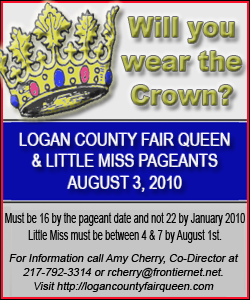 The first group of insects is the cucumber beetles. These can be
green, black and yellow striped, or black and yellow spotted.
The real trouble caused by the beetles is not that they eat
small holes in the leaves, but that the beetles can transmit a
bacterial wilt to the plants as they eat. The first thing you
see is you have a plant that suddenly wilts on various runners
or the entire plant. The best means of controlling this disease
is a good beetle control program. Current recommendations for
homeowners would include these products, with the
days-to-harvest restrictions in parentheses: carbaryl (zero),
bifenthrin (three days) or rotenone (one day). The first group of insects is the cucumber beetles. These can be
green, black and yellow striped, or black and yellow spotted.
The real trouble caused by the beetles is not that they eat
small holes in the leaves, but that the beetles can transmit a
bacterial wilt to the plants as they eat. The first thing you
see is you have a plant that suddenly wilts on various runners
or the entire plant. The best means of controlling this disease
is a good beetle control program. Current recommendations for
homeowners would include these products, with the
days-to-harvest restrictions in parentheses: carbaryl (zero),
bifenthrin (three days) or rotenone (one day).Japanese
beetles love cucurbits as well. Their damage is direct leaf
feeding. Remember, they feed in groups, so once they get
started, you will have a battle on your hands. Carbaryl and
bifenthrin are both good control measures. Carbaryl (Sevin) will
last longer during extremely hot weather.

Squash bugs are usually dark gray to black in color and like
a long stink bug. Best control timing is when the eggs first
hatch. Nonrestricted products are sabadilla (one day), which is
an organic product that might be a little hard to find, and
bifenthrin (three days to harvest). One last note: If the squash
bugs get past their early growth stages, then physically
removing them is about the only control method available.
Squash vine borers usually drill into the new runner areas
and kill off runners one at a time. The adults of these larvae
are red and black clearwinged moths. Scout your plants and look
for the adults, as well as entrance holes and the chewed-up
plant material. Treat as soon as early damage occurs and use one
of the following products for homeowners: carbaryl, bifenthrin
or rotenone. Days-to-harvest restrictions have already been
covered (and these would also apply to pumpkin blossoms).
Tomato diseases
It seems like the tomato is the one plant that just about
everybody tries to grow. Some people grow large numbers, while
others plant one or two in containers. At any rate, the calls
and samples have started coming in to the office already. Most
of the samples have spots, brown leaves and dropping leaves, or
all of the above.
Several diseases hit tomatoes, but two of the more common
ones are early blight and seporia leaf spot. Blossom end rot
seems to have been running rampant on early tomatoes as well,
particularly plants grown in containers and hanging baskets.

As for what to do, here is the checklist: First, keep ripe
fruits picked off the plants. Second, don't work around tomatoes
when they are wet. Next, you can try to improve air circulation,
but if your tomatoes are severely affected, you won't want to
lose any more leaves. And the final step for this year is to try
a fungicide. Mancozeb is probably the recommended one, but it is
very hard to find. The other options are Daconil and maneb,
which are easier to find but probably won't give you as good a
control. The final step for future years is to practice at least
a three-year rotation, with good sanitation in the garden.
Blossom end rot is a nonpathogenic disease that is very
common during extended dry periods. It begins as light tan
water-soaked lesions on the blossom end of the fruit. The lesions
enlarge and turn black and leathery. This can drastically lower
the yield and lower marketability of the fruits. Fluctuating
soil moisture supply during the dry periods and low calcium
levels in the fruit are the major causal factors. Control of
blossom end rot consists of providing adequate moisture from
fruit formation to maturity, and use of mulch -- grass
clippings, plastic, straw, shredded newspapers or plastic -- to
conserve moisture.
[to top of second column]
 |
 Bagworm check
If you haven't checked for bagworms yet, now would be a good
time. Small bags have been noticed in the county for the last
several weeks. Re-treatment may be necessary in some cases. Carbaryl
(Sevin) will work on the smaller bagworms, while the Bt products may
be required for the larger ones. Remember, bagworms frequently start
in the tops of trees. Bagworms are the larvae of clearwing moths
that don't fly too well. If you control the bagworms well, you may
not have high populations for a few years.
Pruning evergreens
This is the time of year to wrap up pruning chores on evergreens.
This includes both needle-type and broadleaf evergreens. If you're
wondering what a broadleaf evergreen is, that includes holly,
rhododendron and azalea. The logic behind pruning your yews at this
time is to allow sufficient time for regrowth to become hardened off
before winter and to keep new growth from becoming too rank before
the winter months.
Pruning evergreens is part art and part science, but mostly art.
A few simple rules to follow make the job results much more
pleasing.

Upright growing evergreens, such as pines and spruces, should not
have the main leader cut off. This would destroy the natural shape
and make the resulting growth more susceptible to breaking off.
If individual branches are being cut off, they should be cut back
to a bud. This will allow the bud to become the new main branch. You
can also control growth direction of branches in this way.
If you are growing trees for cut Christmas trees, all bets are
off, as you are only dealing with trees through the first seven
years of their life or so.
Make sure you use the proper equipment. Individual pruning cuts
are best done with bypass loppers or pruning shears. These make
clean cuts without much damage to the remaining wood. The old
anvil-type shears and loppers cut to a point, then crush the
remaining wood. For yews, junipers and arborvitae that are trained
to a certain size or shape, you will want to use hedge shears
(electric or manual) that are sharp and properly tightened. Most of
these types of shears can cut up to about a quarter of an inch in
size.

When pruning evergreens, remember the dead zone. This is the area
toward the center of the plant that doesn't receive much light. It
also has few needles or active buds. Cutting into the dead zone will
cause many years (or forever) of little green growth.
Also remember to prune so that the base of plants is wider than
the top. This allows sunlight to hit the bottom area as well and
keeps the bottom from dying up.
[By
JOHN FULTON,
University of Illinois Extension, Logan County] |